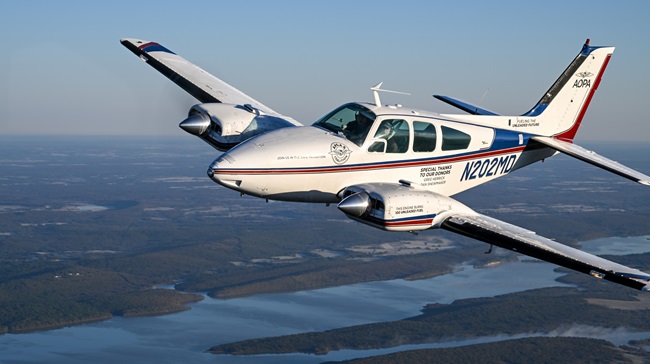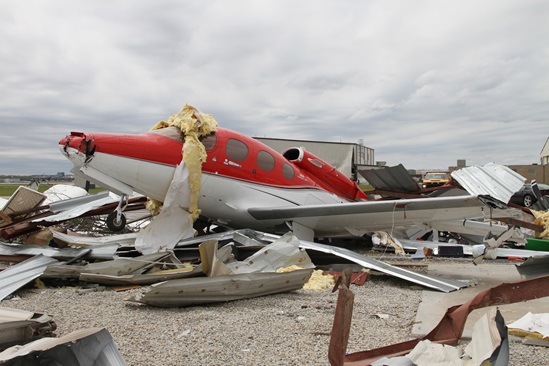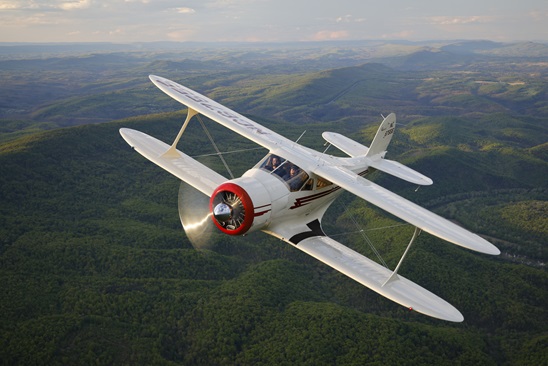When Women in Aviation International (WAI) honors new inductees into its Pioneer Hall of Fame in Dallas this March, the group will include a historic group of air races, a member of the Women Airforce Service Pilots (WASPs), the first professional female aeronautical engineer, and one of the first women airplane mechanics for the Navy.
WAI’s twenty-third annual International Women in Aviation Conference March 8 through 10 will carry the theme “Reaching Tomorrow Today,” and will offer seminars, workshops, networking events, speakers, and a commercial exhibit area. The induction ceremony and scholarship awards will take place at the concluding banquet on March 10, WAI said in a news release.
“The banquet is an evening where we honor women who opened doors for us,” said WAI President Peggy Chabrian. “Our members are inspired by the rich history these women bring. In many cases, they get to actually meet these living legends and speak to them and be photographed with them. It’s an experience our members don’t soon forget.”
The 2012 inductees include the following:
- The first Women’s National Air Derby pilots. In 1929, 20 women pilots flew in the first women’s National Air Derby from Santa Monica, Calif., to Cleveland, Ohio, WAI noted; during the nine-day event, the women encountered sabotage, mechanical difficulties, navigational challenges, and cultural stereotypes. Louise Thaden won the heavy class airplane division. Phoebe Omlie won the light class airplane division. Race participant Marvel Crosson lost her life during the race. “Shortly before her death, Marvel said that she would gladly give her life to prove that women could fly,” the news release said. The 17 other women included Florence Lowe “Pancho” Barnes, Amelia Earhart, Ruth Elder, Claire Fahy, Edith Foltz, Mary Haizlip, Jessie “Chubbie” Miller, Opal Kunz, Ruth Nichols, Blanche Noyes, Gladys O’Donnell, Neva Paris, Margaret Perry, Thea Rasche, Bobbi Trout, Mary Von Mach, and Vera Dawn Walker.
- Bernice “Bee” Falk Haydu , WASP Class 44-7. As a WASP, Haydu was assigned to a UC-78 training base, where she flew as a utility pilot and an engineering test pilot. She is best known, WAI said, as president of the WASP organization, Order of Fifinella, from 1975 to 1978, when she worked with Col. Bruce Arnold (son of Gen. Hap Arnold) and Sen. Barry Goldwater (R-Ariz.) to bring about military status and veteran’s benefits for WASP members. The organization had the support of all the women serving in the House and Senate at the time, WAI noted, and Haydu and several other WASPs testified at hearings. Their efforts were rewarded when President Jimmy Carter signed The G.I. Bill Improvement Act of 1977, granting full military status. In 2003 Haydu published her memoir Letters Home 1944-45. She “remains a much sought-after spokeswoman for the WASP, proudly wearing her WASP uniform on many occasions.”
- Mary Magdalene “Maggie” Maga. One of the Navy’s first women aircraft mechanics, Maga trained and served during World War II as an aviation machinist mate. “Besides doing maintenance on aircraft on the night shift, she also performed line handling services such as driving trucks, parking and fueling aircraft, and lighting the black smudge pots used to light the runways at night,” WAI said. She received flight pay for flying on test flights following inspection and maintenance checks. Maga paved the way for the women mechanics and line service crew members who followed her, the association said. “She is proud to represent the other unnamed women who maintained and serviced Navy aircraft during World War II, and she remains busy encouraging younger generations of women mechanics.”
- Elizabeth “Elsie” MacGill. MacGill is often cited as the first woman in the world to qualify as a professional aeronautical engineer and aircraft designer. In 1927, she was the first woman in Canada to receive a degree in electrical engineering, WAI said. Two years later at the University of Michigan she became the first woman to earn a master’s degree in aeronautical engineering. The same year, she contracted polio, which left her paralyzed from the waist down. Early in World War II, MacGill became the chief aeronautical engineer for the Canadian Car and Foundry Plant in Fort William, Ontario, where Hawker Hurricanes were built for the Allied forces. WAI hailed her for promoting mass-production techniques for the aviation industry, modifying the Hurricane for winter use, and establishing standards for test pilot reporting. MacGill also was the first woman to serve as chair of a United Nations aviation technical committee, and led the drafting of the first airworthiness regulations for the new International Civil Aviation Organization (ICAO). Later she became an activist for women’s rights, and a mentor for women in aviation and engineering. She died in 1980.
The WAI Pioneer Hall of Fame was established in 1992 to honor women who have made significant contributions as record setters, pioneers, or innovators, with special consideration afforded to individuals or groups who have helped other women be successful in aviation or opened doors of opportunity for other women.
Secure online registration is available for the conference at the Hilton Anatole with a discounted WAI conference rate available through Feb. 7. Discounted registration is available for military personnel and full-time students.



